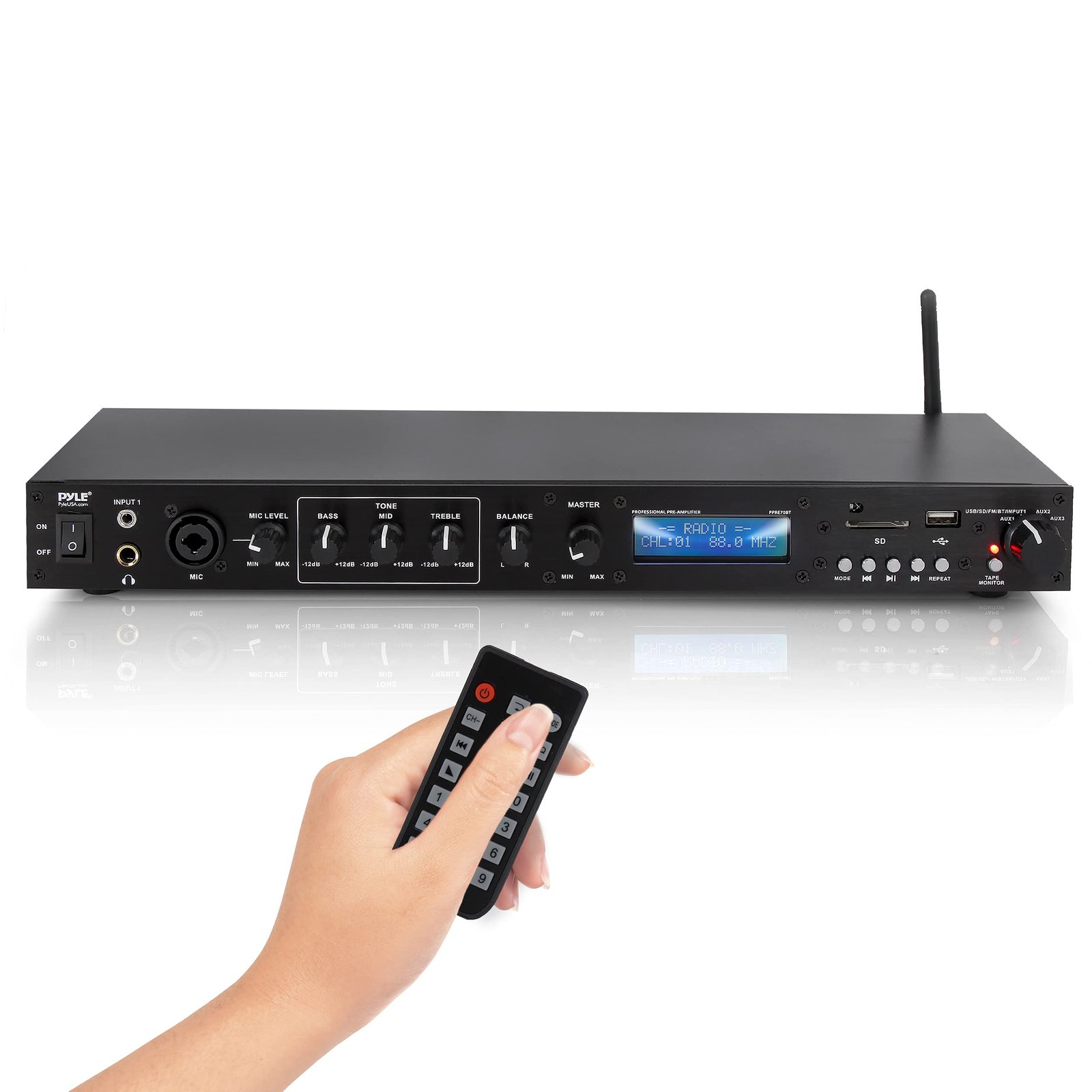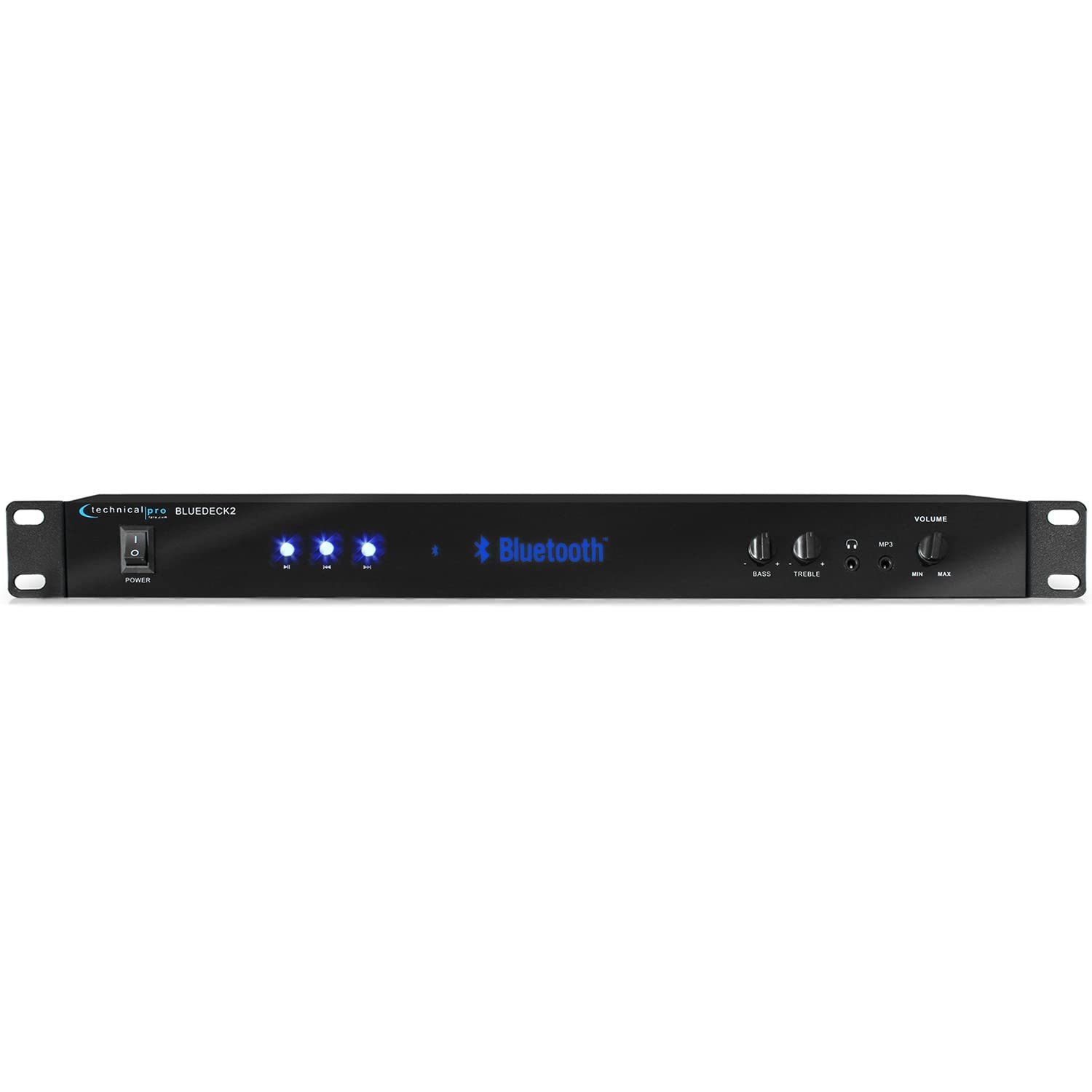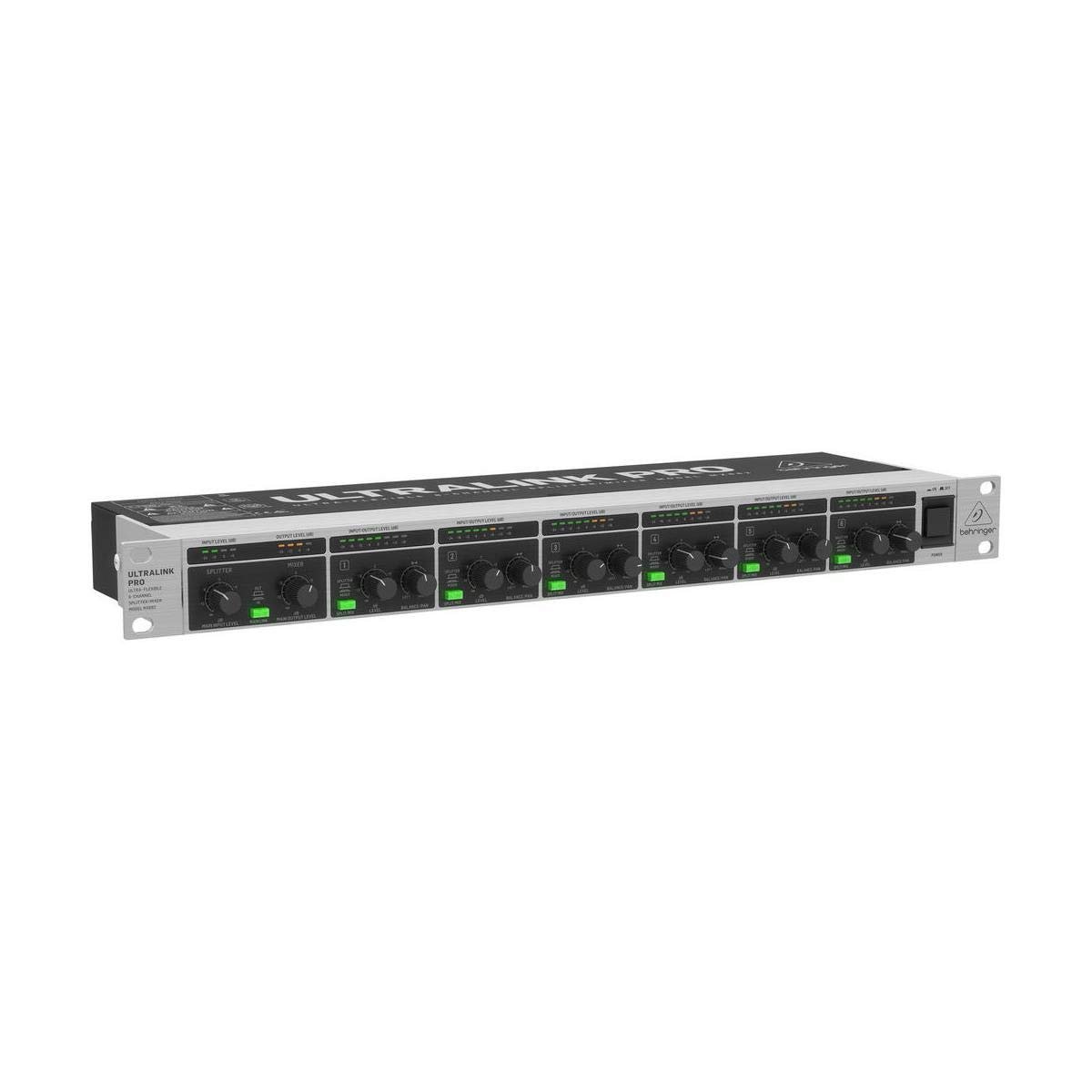Rackmount preamps can be a game-changer for your sound setup if you’re into audio recording or live performances.
These devices amplify your microphone signals to ensure clarity and strength before they hit your recording or mixing equipment.
Rackmount preamps are particularly valuable because they offer multiple channels in a compact form that fits into standard equipment racks.
This makes them ideal for professional studios or any setting where space is at a premium.
When choosing a rackmount preamp, there are several key factors to consider.
The number of channels is crucial, depending on how many audio sources you plan to manage simultaneously.
Pay attention to the type of connections available, as compatibility with your existing gear is critical.
Additionally, consider the preamp’s tonal quality—some may add a specific character to the sound while others aim for transparency.
Build quality and ease of access to controls should also be on your checklist to ensure a durable and user-friendly experience.
Selecting the right rackmount preamp can significantly impact your sound’s fidelity and overall performance.
With the right choice, you’ll be ready to enhance your audio projects and take your sound to the next level.
Top Rackmount Preamps
You’re in the right place if you’re looking to elevate your audio setup with a rackmount preamp.
We’ve gathered a selection of the best options to help you find the perfect match for your needs.
Let’s dive into a few standout choices that offer incredible sound quality and functionality.
Pyle Rack Mount Studio Pre-Amplifier
If you’re looking for a budget-friendly preamp with various connectivity options and built-in Bluetooth, this Pyle model could be a solid choice for your audio setup.
- Multiple connectivity options including USB, SD card, and RCA inputs
- Built-in Bluetooth allows wireless streaming from various devices
- Compact and lightweight for easy rack-mount installation
- Occasional performance issues with prolonged use
- Limited Bluetooth range might not suit all spaces
- Lacks advanced audio processing features found in higher-end models
This preamp provides wireless convenience as it pairs effortlessly with your Bluetooth devices.
The appeal of its compact design lies in the flexibility it provides when integrating into your existing audio setup.
You can connect various external devices through USB, SD card, and RCA inputs, meeting most basic connectivity needs.
The Pyle preamp stands out for its user-friendly features, especially the intuitive control panel and remote control access.
This layout allows for easy adjustments, ensuring you can tailor the sound to your preferences with minimal hassle.
While its straightforward functionality is its strength, keep in mind that it might not satisfy users requiring more advanced audio processing.
Consider the Bluetooth capabilities if you’re keen on streaming music wirelessly.
Though the range is decent, ensure your space and use-case fit within its limits to avoid connectivity interruptions.
For a budget-conscious setup, this preamp serves as an economical addition that balances affordability with a mix of modern features.
OSD Pre-1 High Definition Preamplifier
Grab the OSD Pre-1 if you’re after an affordable upgrade for your home audio setup with great control and quality sound.
- Provides excellent sound with enhanced audio detail.
- Includes versatile control options right on the front panel.
- Offers good value for its price range.
- No headphone output, which limits some listening options.
- Lacks a remote control for convenient adjustments.
- Design might feel a bit dated to some users.
OSD Audio’s Pre-1 preamplifier brings clarity and depth to your home theater experience.
You’ll appreciate the boost in audio detail, noticeable whether you’re enjoying a movie or just listening to music.
The front panel offers useful controls that let you tailor the sound to your preferences, with easy access to bass, treble, and balance adjustments.
Despite its capabilities, the Pre-1 lacks a few modern conveniences.
The missing remote control means you’ll need to adjust settings manually, which could be slightly inconvenient depending on your setup.
Additionally, the absence of a headphone jack is a minor drawback if private listening is important to you.
This preamplifier offers a striking blend of affordability and audio enhancement.
It’s an excellent choice for those wanting to elevate their sound system without breaking the bank.
Keep in mind its limitations, but for many users, its sound quality more than compensates.
Technical Pro Bluetooth Audio Receiver
The Technical Pro Bluetooth Audio Receiver is designed to fit seamlessly into a rack mount setup, making it a strong candidate for those who need to optimize their audio configurations in studio or home settings.
Its Bluetooth capability allows for effortless streaming from a range of devices, including smartphones and tablets.
You’ll appreciate the versatility of having multiple input and output choices.
Despite its ease of use and range of functions, the receiver features Bluetooth 2.1, which may not be the most current version but still performs adequately.
The product has received positive ratings, yet the number of reviews is somewhat limited.
If a product with more community feedback is important to you, this could be a consideration.
Finally, the remote control, while user-friendly, might not offer the depth of control some users desire.
This receiver might be perfectly suited for you if convenience and compatibility are more pressing than cutting-edge technology.
Behringer MX882 V2 Mixer Splitter
The Behringer MX882 V2 is a versatile choice for those looking to optimize audio setup easily.
- Offers flexible use with independent channel operations
- Provides clear, high-quality audio output
- Compact design, perfect for tight studio spaces
- Lacks a front panel microphone input
- No built-in phantom power for microphones
- May require additional equipment for optimal use
For those who are hunting for a versatile rackmount preamp, the Behringer MX882 V2 stands out with its dual functionalities.
Whether you’re looking to mix or split signals, this product has got you covered.
Its ability to independently control channels makes it an excellent tool for customizing your audio experience.
The design choices reflect attention to detail, ensuring sound integrity isn’t compromised.
The high bandwidth supports exceptional clarity, making it suitable for various audio environments.
You can integrate it into an existing setup without a hitch.
The absence of a front panel mic input might be a downside for some users, but its compact form factor compensates for this.
It’s designed for those who prefer flexibility over built-in features, offering a broad field of applications.
Behringer MIC2200 Preamp
This preamp is worth considering if you’re after a robust and flexible tool for voice and video recording.
- Warm audio quality due to vacuum tubes
- Versatile with different types of equipment
- Easy-to-use EQ features
- Relatively large size might be cumbersome
- Occasional reliability issues reported
- Limited settings for advanced users
The Behringer MIC2200 Preamp is all about delivering that warm, classic tube sound.
If you’re setting up a recording studio, this piece of gear can add some real character to your recordings, especially when it comes to vocals and instruments.
A highpass filter and fully parametric EQ give you some nice tweakability on-the-fly too.
When it comes to connectivity, this preamp plays well with a variety of devices.
It’s a great match for both microphones and other audio gear, making it a flexible addition to your setup.
This versatility can be a big plus if you work with a range of recordings.
On the flip side, the size of the unit could be a challenge if you have limited space.
Some users have reported occasional reliability issues, so you might want to weigh this if you’re looking for a rock-solid choice.
If you need advanced features, this preamp’s capabilities may feel basic.
Buying Guide
Important Features to Consider
When choosing a rackmount preamp, focus on sound quality.
Look for preamps with low noise and high dynamic range, as these affect how clear and detailed the sound will be.
Consider whether you need a tube or solid state, as each offers different tonal characteristics.
Another key consideration is connectivity.
Ensure the preamp has the right input and output options for your setup.
Common options include XLR, TRS, and digital outputs.
If you use a DAW, check for compatible digital connections to streamline your workflow.
Number of Channels
Think about how many channels you need.
If you’re recording multiple instruments or voices simultaneously, a preamp with multiple channels is a must.
For simpler setups, a single or dual-channel preamp might suffice.
Build Quality and Size
Preamps vary widely in build quality and size.
A sturdy, well-constructed preamp can last longer and withstand the rigors of studio use.
Consider the size of your rack and how the preamp will fit.
You don’t want a massive unit if space is tight.
Budget Considerations
Finally, set a budget.
Preamps can range from affordable to quite expensive.
Determine what features are essential for your needs and find a preamp that fits your budget without compromising quality.
Frequently Asked Questions
Learn why some gearheads lean towards tube preamps, explore the benefits of external preamps in an audio setup, and identify top picks for recording classical guitar.
Discover if investing in a high-end phono preamp is worth it and what to consider when purchasing a rackmount preamp.
Tips for integrating new gear into your setup are also covered.
Why do some folks prefer tube preamps over solid-state ones?
Many people appreciate tube preamps for their warm and rich sound.
Some feel that tubes add a bit of character or “warmth” that can enhance the overall listening experience.
Others prefer the crisp, clean sound of solid-state preamps, which some describe as more reliable and easier to maintain.
What makes external preamps a good choice for an audio setup?
External preamps are often favored for their flexibility and superior audio quality.
By taking the preamp outside of the integrated environment, you can fine-tune your sound with a variety of options.
They allow for better control and, often, a significant upgrade to your existing gear without replacing everything.
Which preamps are considered the top picks for classical guitar recording?
You’ll find that the Grace Design m101 is a popular choice due to its clean and transparent sound.
The Universal Audio 610 is another favorite, known for its vintage vibe and smooth tone.
Both options can highlight the nuances of classical guitar recordings beautifully and are trusted by many recording professionals.
Does splurging on a high-end phono preamp make a noticeable difference?
Many audiophiles argue that it’s worth investing in a high-end phono preamp if you’re serious about audio quality.
It can provide greater detail and clarity, helping to bring out the best in your vinyl collection.
For those truly passionate about listening quality, the difference can be quite noticeable.
What should I look out for when buying a rackmount preamp?
Look for the number of channels you need based on your setup requirements.
Pay attention to the build quality and the type of preamp—whether tube, solid-state, or hybrid.
Consider features like gain levels, impedance options, and any additional inputs and outputs that might come in handy for your setup.
How do I integrate a rackmount preamp into my existing setup?
Start by connecting your rackmount preamp to your audio interface.
Make sure you have the appropriate cables, usually XLR or TRS for most connections.
Then, set proper gain staging to match your current gear levels.
Always read the user manual for specific instructions.
This will help you optimize performance and prevent any setup issues.






